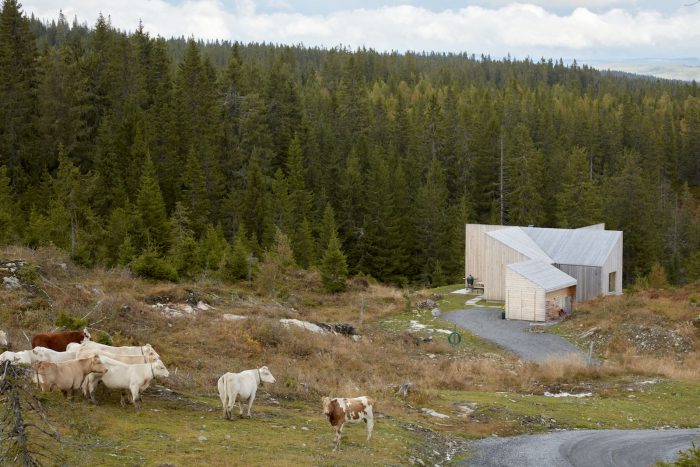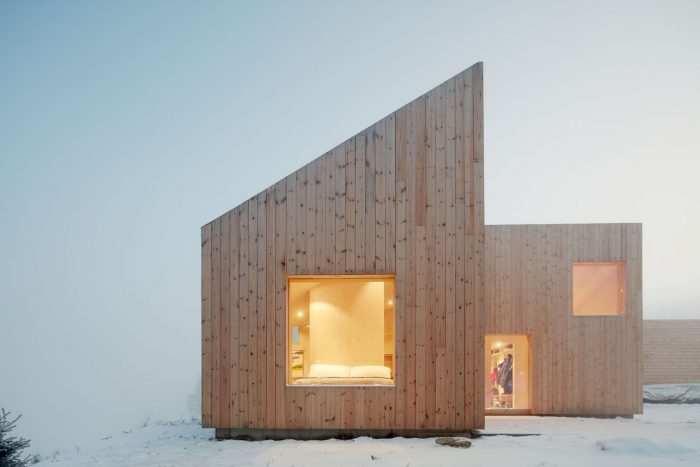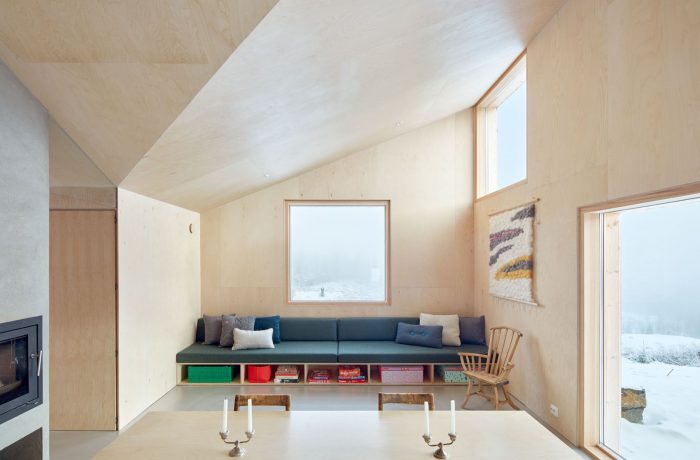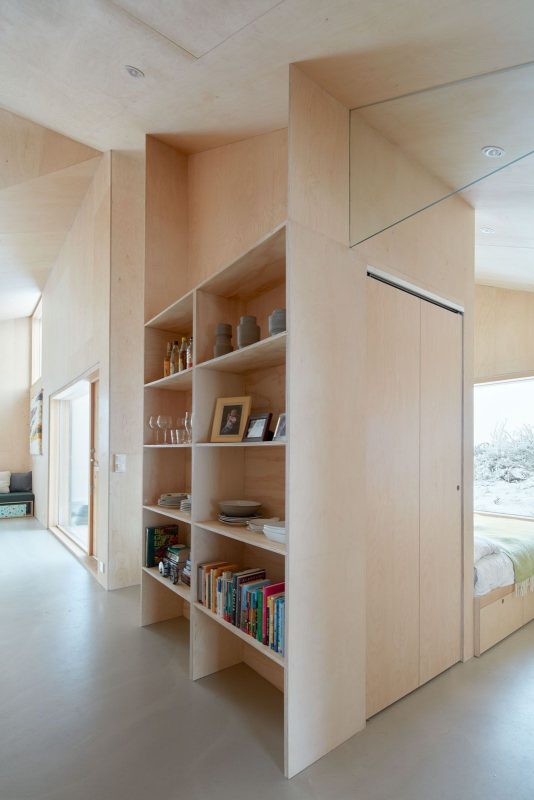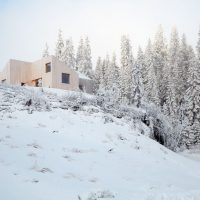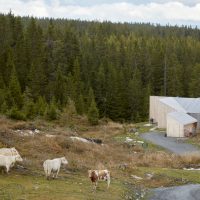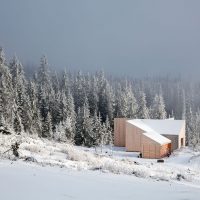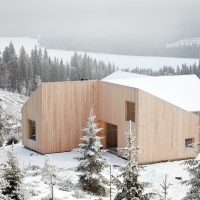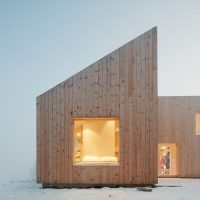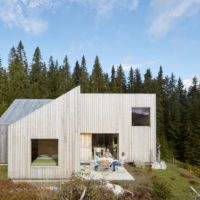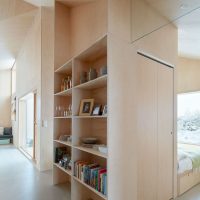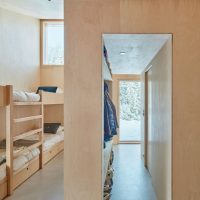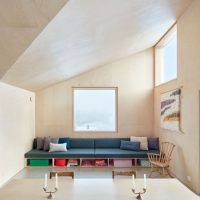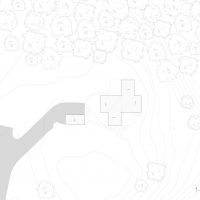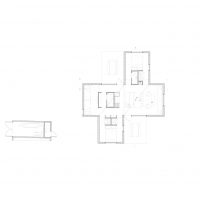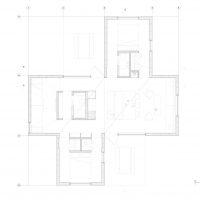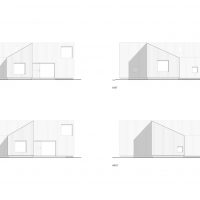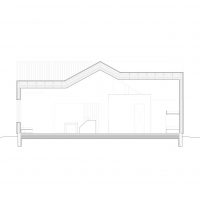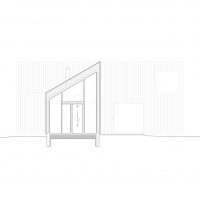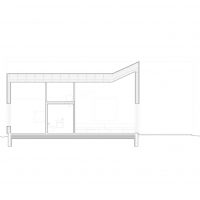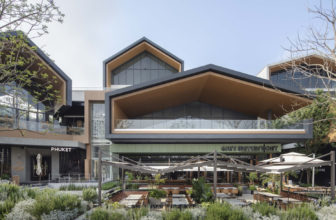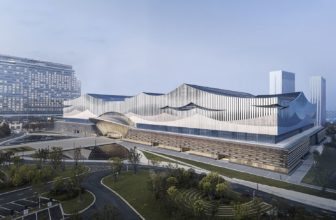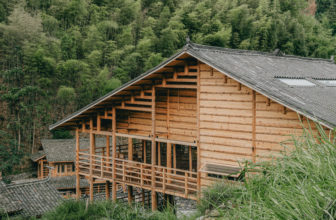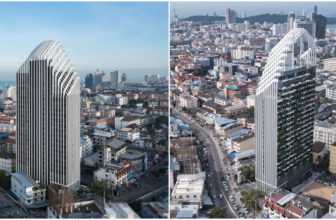Designed by Mork-Ulnes Architects, The site is located at the northern edge of Norway, which is a vast wilderness just an hour north of where the family resides in Oslo. Though the landscape is still wild, it is easily reached by car, bike, or ski from the city. The location was chosen because of its proximity to Oslo and its easy access to cross-country skiing and fishing, which can be done at Mylla Lake just below. It only takes a few hours to reach via backcountry trails on bike or skis, which Scott has occasionally indulged in, or just over an hour by car.
“Amenities” that the clients requested at the outset were: three bedrooms, including a bunkroom for kids; two bathrooms as efficient and small as possible; a small annex for ski waxing, bike, and ski storage, and a two-person sauna; connection from inside to out.
Hytte is the Norwegian word for a cabin. Hytter (cabins) are a huge part of Norwegian culture, with over a quarter of all Norwegians owning at least one. The traditional Norwegian hytte is small and primitive, serving a simple utilitarian purpose to shelter, often with an outdoor toilet and no running water. The typical interior is cramped, compartmentalized, and disconnected, with rooms loaded off a narrow corridor. The living quarters are usually dark with pine clad walls, small windows, and low ceilings.
The design challenge was to rework the traditional hytte building type so that it still maintained its utilitarian character — compact, efficient, and driven by function
— but to form the building in relation to its landscape and create an interior that felt more expansive and generous — and still included three bedrooms and two full (though tiny) bathrooms in 84 square meters.
Though planning regulations required a gable roof, the architects were able to split the gable in half to create four shed roofs. This produced a pinwheel plan with two sheltered outdoor spaces — the Morning porch and the Evening porch — which capture the sun and are protected from wind and snow shedding from the roof.
“The pin-wheel plan and sloping roof form are derived from the climate, the desire
to separate the bedrooms for privacy and to offer contrasting views from each room. In that sense, the building is a very straightforward response to its context, while at the same time generating a unique experience,” says Casper Mork-Ulnes.
Instead of emphasizing the site’s sweeping panorama of pine and deciduous forests, mountains, and lake, Mylla Hytte takes a more deliberate approach to the landscape around it. The wings of the house engage four distinct characters of the site: the great room looks onto Mylla Lake, the guest room looks towards the rolling hillside, the kids’ room looks up at the sky, and the bedroom has a private view of the towering forest.
Rather than compartmentalizing the plan into a series of separate rooms, the interior of the 84 square meter cabin is designed as a free-flowing landscape. The 2.4m to 4.3m high vaulted ceilings are continuous throughout to form a uniting canopy. Underneath the canopy is three functional cores — one for the kitchen, coat closet and bathroom, another for bathroom and storage, and another for storage and mechanical equipment — which direct the interior flow and create private zones in the interior.
In the end, the small cabin can comfortably accommodate the client’s family of four along with 4-6 guests within its two bedrooms, bunkroom, combined living room and kitchen, two full bathrooms.
To create a warm and light-filled interior, the architects used pine plywood treated with lye and white oil to finish the interior of the cabin. Custom plywood furniture, including bed frames, bunk beds, couch, dining table, benches, and shelves are found throughout.
“We wanted to create a clean and simple interior so used only two materials for the interiors: lied pine plywood and concrete,” says Lexie Mork-Ulnes. “The cabin is so small, we wanted to make things as multi-purpose as possible. The kitchen island is also the bench for the dining table. The roof over the bathroom volume is a playroom for the kids since their bedroom is so small. All of the beds have built-in drawers, and the sofa has large cubbies for books and storage bins for games and legos. The sofa is made of two single mattresses, for easy conversion to extra beds when the house is full. We attempted to make the furniture as material efficient as possible, so, for example, the dining table is built from exactly two sheets of plywood.”
Project Info:
Architects: Mork-Ulnes Architects
Location: Jevnaker Municipality, Norway
Lead Architects: Casper Mork-Ulnes
General contractor: Kreativt Hus, (Michal Manzak and Konrad Jasinski)
Area: 100.0 m2
Project Year: 2017
Photographs: Bruce Damonte
Manufacturers: Nyhuset Bruk, Weber
Project Name: Mylla Hytte
- Photography by © Bruce Damonte
- Photography by © Bruce Damonte
- Photography by © Bruce Damonte
- Photography by © Bruce Damonte
- Photography by © Bruce Damonte
- Photography by © Bruce Damonte
- Photography by © Bruce Damonte
- Photography by © Bruce Damonte
- Site Plan
- Ground floor plan
- Plan
- Elevations
- Section A
- Section B
- Section C


